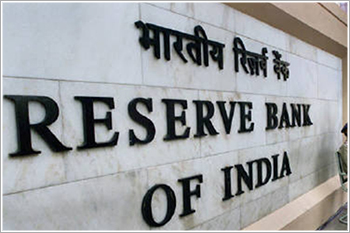10 Feb 2022 , 08:43 AM

The Reserve Bank of India (RBI) is set to announce the country’s sixth and last bi-monthly monetary policy for the current financial year FY22 today. The six-member monetary policy committee (MPC) has already commenced a three-day monetary policy meeting starting February 8 and the outcome will be presented on Thursday. The majority are expecting yet another ‘status quo’ in accommodative policy stance as well as policy interest rates. However, the reverse repo rate is likely to see some major changes. A rate hike scenario in policy repo rate is expected to be at a slower lane.
In its monetary policy expectations report, CARE Ratings said that this policy is being presented in the backdrop of a rise in bond yields, surge in global energy prices, persistent supply chain issues, global inflationary upswing and most importantly the advent of monetary policy tightening by the major global central banks. To add to that there is a softening in the growth momentum in the domestic economy and a substantial government borrowing programme in the offing. Many of these developments call for a contractionary monetary policy and would test the RBI’s commitment to maintaining an easy monetary policy despite the still uneven growth in the domestic economy.
Further, CARE outlined that the MPC would be required to deftly address the challenges associated with global and domestic inflationary pressures, liquidity in the system, an uptick in yields as well as the uncertainty around the pandemic.
CARE said that policy statements would be closely watched for signals of a shift in policy stance and the potential timelines for change in policy rates.
As per CARE, here’s a list of key factors to drive the RBI policy decision.
1. Bank credit demand on the rise:
Bank credit offtake has seen a notable improvement in recent months. The incremental bank credit growth (over end -March) as of mid-January’22 was 5% against the 2.6% growth in the corresponding period of last year. There has been a broad-based improvement in credit demand across the major segments when compared with a year ago.
The incremental credit growth to industry and services during Apr-Dec’21 was 5.2% as against the degrowth of 2.2% in the same period of last year. Retail credit demand has grown by 8.5% (2.9% in Apr-Dec’20) and credit-offtake by agriculture has increased by 11.6% v/s the 7.2% growth of last year.
2. Balancing act: Liquidity Management:
The banking system has been flushed with surplus liquidity since May’19 and despite measures by the RBI to rein in the surplus, it continues to be sizeable. The daily liquidity surplus (net outstanding) has been sustained at over Rs. 5 lakh crore for the last eights months.
CARE notified that the surplus has primarily been due to the higher quantum of bank deposits versus the credit extended. The outstanding bank deposits as of 14 January’22 stood at Rs.159 lakh crore as against the outstanding bank credit of Rs. 115 lakh crore. Also, the various liquidity injection measures undertaken by the RBI as well as its foreign currency purchases have added to the surplus in the banking system over time.
Further, the RBI conducted 23 VRRR auctions since its December’21 policy for tenures ranging from 2 to 28 days. In total Rs. 42 lakh crore was parked in this facility over this period for varying durations. The cut-off rate of these auctions (average 3.97%) has hovered close to the repo rate and is being viewed as a move towards the normalization of monetary policy.
“The liquidity surplus is likely to stay at elevated levels even with the ongoing pick-up in bank credit offtake. Despite this, the RBI would continue to make available adequate liquidity in the system to support the economic revival. To temporarily remove the surplus from the system, the RBI would be required to continue with VRRR auctions for longer durations and larger quantum as the situation demands,” CARE said.
3. Inflation worries:
Prices have been on the rise and this was reflected in the inflation reading for December’21 which moved up to a 5 month high of 5.6% (y-o-y growth). The price pressures have been rather broad-based across the segments. With the global crude oil prices rising to around $90/bbl ($15/bbl increase since last policy) and global supply disruptions persisting price pressures could harden further. Domestic inflation is likely to rule around the upper limit of the RBI’s target range (6%) for the remainder of FY22.
“Although the RBI has been prioritizing growth despite underlying inflationary pressures a further build-up in inflationary pressures that could take inflation over its target would warrant a monetary policy response,” CARE added.
At present, RBI’s policy repo rate under the liquidity adjustment facility (LAF) is unchanged at 4%. While the reverse repo rate under the LAF remains unchanged at 3.35% and the marginal standing facility (MSF) rate and the Bank Rate at 4.25%.
Related Tags

![]() IIFL Customer Care Number
IIFL Customer Care Number
(Gold/NCD/NBFC/Insurance/NPS)
1860-267-3000 / 7039-050-000
![]() IIFL Securities Support WhatsApp Number
IIFL Securities Support WhatsApp Number
+91 9892691696
www.indiainfoline.com is part of the IIFL Group, a leading financial services player and a diversified NBFC. The site provides comprehensive and real time information on Indian corporates, sectors, financial markets and economy. On the site we feature industry and political leaders, entrepreneurs, and trend setters. The research, personal finance and market tutorial sections are widely followed by students, academia, corporates and investors among others.
Stock Broker SEBI Regn. No: INZ000164132, PMS SEBI Regn. No: INP000002213,IA SEBI Regn. No: INA000000623, SEBI RA Regn. No: INH000000248

This Certificate Demonstrates That IIFL As An Organization Has Defined And Put In Place Best-Practice Information Security Processes.